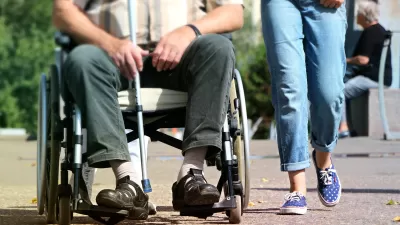The latest edition of the AARP Livability Index reveals the U.S. regions with more of the kinds of neighborhoods that offer quality of life benefits for residents of all ages.

Whitney Airgood-Obycki and Jennifer Molinsky share insights from the latest AARP Livability Index, co-authored with the Joint Center for Housing Studies of Harvard University.
"The AARP Livability Index offers a multifaceted approach to understanding what makes communities livable for people of all ages. The index is composed of seven categories: engagement, environment, health, housing, neighborhood, opportunity, and transportation. Each category includes several metrics drawn from publicly available data sources," according to the article's explanation of the Livability Index.
Among the geographic themes to emerge from the study are that the Northeast and the Midwest tend to have the most livable neighborhoods, according to Airgood-Obycki and Molinsky. More specifically: "In the Northeast region, 32 percent of neighborhoods are in the top national quintile, as are 24 percent of those in the Midwest, 20 percent in the West, and just 9 percent in the South."
"On average, block groups in the Northeast also have the highest overall livability score of 53.8, nearly 5 points higher than the average of 49.0 in the South. Northeastern communities score higher than all other regions in three categories: engagement, neighborhood, and transportation."
The article concludes with a call to action: that all neighborhoods can be livable, no matter where they are found. "The great benefit of the Index is that it enables communities to recognize the features they already have and identify areas for improvement."
FULL STORY: THE GEOGRAPHY OF LIVABILITY: INSIGHTS FROM AARP’S LIVABILITY INDEX

Study: Maui’s Plan to Convert Vacation Rentals to Long-Term Housing Could Cause Nearly $1 Billion Economic Loss
The plan would reduce visitor accommodation by 25,% resulting in 1,900 jobs lost.

North Texas Transit Leaders Tout Benefits of TOD for Growing Region
At a summit focused on transit-oriented development, policymakers discussed how North Texas’ expanded light rail system can serve as a tool for economic growth.

Using Old Oil and Gas Wells for Green Energy Storage
Penn State researchers have found that repurposing abandoned oil and gas wells for geothermal-assisted compressed-air energy storage can boost efficiency, reduce environmental risks, and support clean energy and job transitions.

Private Donations Propel Early Restoration of Palisades Playground
Los Angeles has secured over $1.3 million in private funding to restore the Pacific Palisades playground months ahead of schedule, creating a modern, accessible space that supports community healing after recent wildfires.

From Blight to Benefit: Early Results From California’s Equitable Cleanup Program
The Equitable Community Revitalization Grant (ECRG) program is reshaping brownfield redevelopment by prioritizing projects in low-income and environmental justice communities, emphasizing equity, transparency, and community benefits.

Planting Relief: Tackling Las Vegas Heat One Tree at a Time
Nevada Plants, a Las Vegas-based nonprofit, is combating the city’s extreme urban heat by giving away trees to residents in underserved neighborhoods, promoting shade, sustainability, and community health.
Urban Design for Planners 1: Software Tools
This six-course series explores essential urban design concepts using open source software and equips planners with the tools they need to participate fully in the urban design process.
Planning for Universal Design
Learn the tools for implementing Universal Design in planning regulations.
Ascent Environmental
Borough of Carlisle
Institute for Housing and Urban Development Studies (IHS)
City of Grandview
Harvard GSD Executive Education
Toledo-Lucas County Plan Commissions
Salt Lake City
NYU Wagner Graduate School of Public Service




























